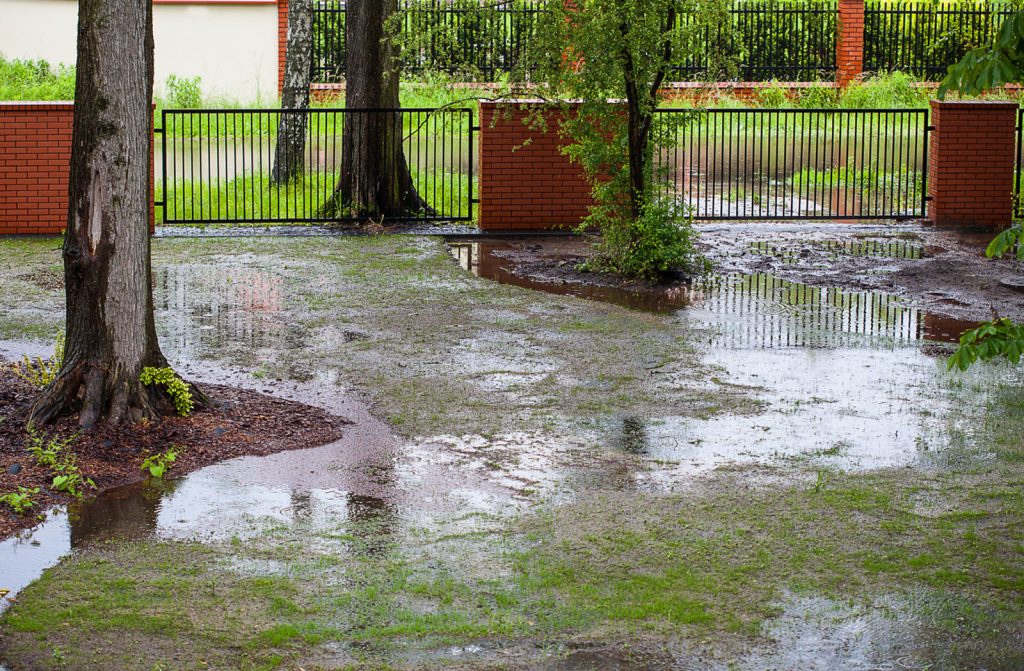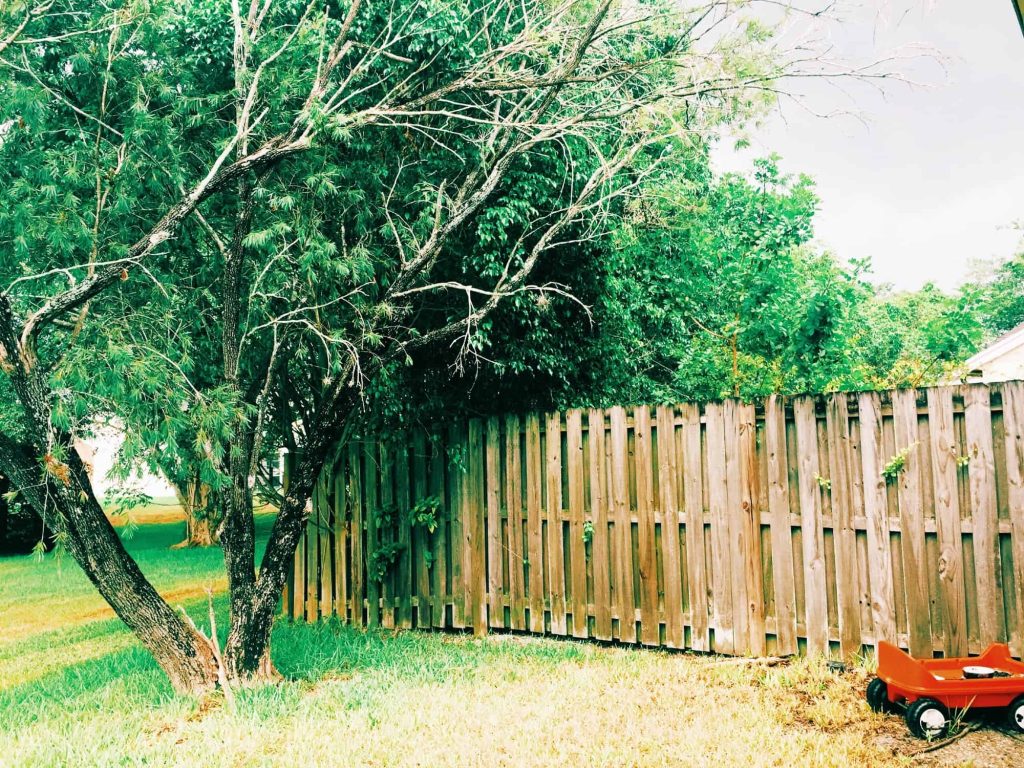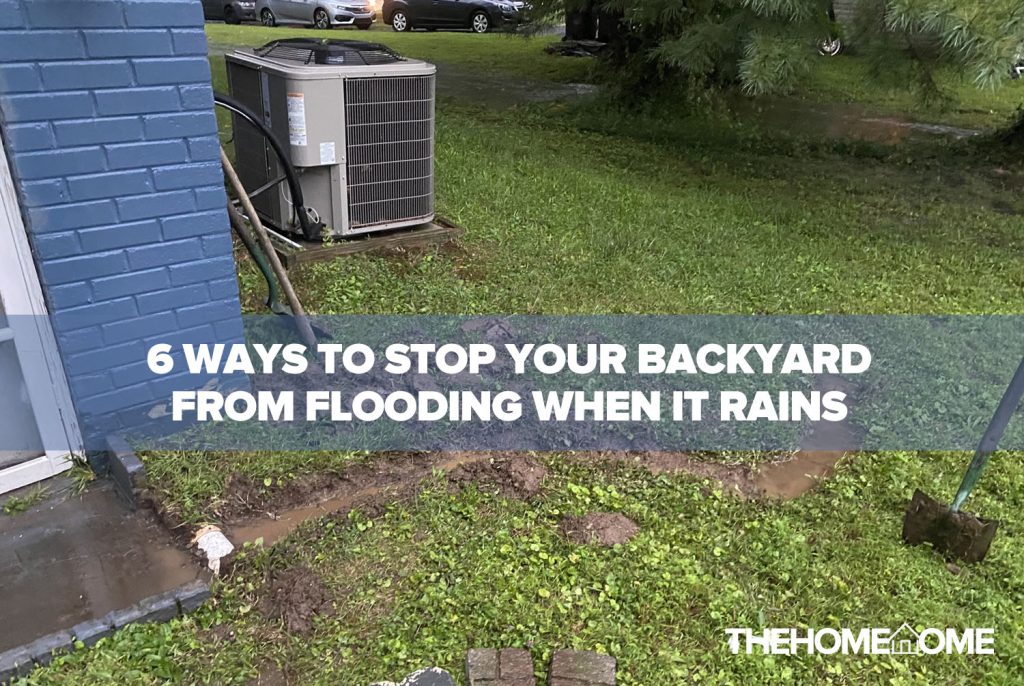It is vital to learn about the drainage options you can adopt before it starts raining and your backyard gets flooded. Blocked gutters and drains are the common reason for a flooded backyard, but resolving that alone might not stop the flooding.
Backyards are the cornerstone of a great landscape, hence why investing in them to create a great relaxing area is essential. If you live in a region where flooding is common, you will have to constantly deal with the rain flooding your backyard regularly and this is what tests even a skilled landscaper.
Flooding anywhere on the land can be frustrating to a homeowner as this reduces your movement around the landscape. A swampy yard can cause quite a lot of damage, hence you need to pay attention to where the flow is coming from.
Standing water is never good no matter how small it is. It can create an environment that is conducive to breeding mosquitoes and hours of beautifying your garden or yard can be ruined by a flood. So, stick with us to find out how to stop your backyard from flooding when it rains.
4 Reasons Why Your Yard Floods When it Rains
If you go into a panic and frustrated mood every time it rains knowing your yard is going to get flooded, you need to get to the root of it first before finding a solution.
Flooding can have an impact on you and the environment at large, so if your land is retaining water every time it rains, below are some reasons behind that.
1. Poor Drainage
This is always the first factor to consider when there is flooding either from rain, damage to dams, or man-made structures that cause flooding. Heavy rainfalls can be unexpected, hence a good drainage system needs to be put in place.
Rainwater needs to have where it goes without pooling in your yard, hence why many homeowners install multiple drainage holes.
2. Clogged Gutters
The is another not-so-surprising reason there is a flood in your backyard every time it rains. It can be easy to neglect your gutter and when this is done, it gets clogged which can in turn worsen the flood. Gutters should be checked weekly or consider replacing the whole thing.
3. Low Elevation
If you live in low elevated coastal areas then you are going to deal with regular floods when it rains. However, rain is not the main reason for floods in low-elevated areas, it is often caused by rising high tides, sea levels, natural disasters like hurricanes, and properties near bodies of water.
4. Poor Soil Condition
Poor soil conditions can also limit the water flow in your backyard, hence the flood. Compacted soil happens as a result of water and tear caused by packed cars, heavy foot traffic, and the use of large equipment. The soil in your backyard needs to be loose and light so water can easily go through it.

How to Stop Your Backyard From Flooding When It Rains
Flooding can have a devastating effect on your backyard if proper drainage is not put in place. It is essential that your home is in good repair way before the rain starts, however, if this is not the case, there are simple ways you can stop your backyard from flooding when it rains.
1. Implement A Good Drainage
A good drainage system has to be put in place to stop flooding after it rains. Implementing drainage can help limit erosion, conserve water, reduce runoff, and control and prevent flooding. Gutters should be the first drainage system to be put in place, especially if your land is located among trees. Other options for drainage include;
- Channel drains
- French drains
- Dry wells
French drains are a common and popular choice. It typically lasts up to 10 years but has to be maintained to prevent clogging. Channel drains are small trenches to be installed along the walkways and landscapes. Lastly, dry well, installing this might require a permit but it’s considered a very effective drainage hole.
2. Grading
Poor grading can cause floods in your backyard just like compacted soil, so after installing the ideal drainage system, consider leveling the land as well. Most homeowners don’t want the yard to be completely flat, in fact, it is highly unlikely to find a yard with no downward slope at all. So, you can review the low elevated places in your yard and if it is poorly graded, it is time to have it filled with soil and gravel.
Stormwater tends to run toward the house rather than away from it when it’s poorly graded. Consider creating a barrier with cement blocks or pressure-treated wood.
3. Reduce Shades
This might seem far-fetched but it can help limit the flood when it rains. Shades are great in summer but won’t be of many benefits when it rains. You can try to reduce the shade by cutting down the trees, this enables your yard to get enough sunlight after it rains and it can evaporate the water faster and also keep mold from forming on your lawn.
4. Grow A Rain Garden
Growing a rain garden or combining it with mulch is another way you can stop your backyard from flooding every time it rains. A rain garden will add some protection and beauty to your yard while the mulch can help hold moisture.

The rain garden is a combination of deep-rooted water-loving plants, river rocks, and mulch.
A rain garden is designed to help absorb rainwater and it is built into a shallow trench or hill sloping down to prevent floods from reaching your home. A rain garden is filled with water-loving plants that absorb a lot of water, such as Scarlet Beebalm or Big Bluestem grass.
5. Add Mulch to Your Landscape
You can consider adding mulch to your landscape to help soak the excess water in your yard. The combination of the rain garden and mulch can also be used to control floods when it rains.
Much can also keep the water coming from the roof from ruining your topsoil and help maintain the soil temperature. Both organic and inorganic mulch can prevent floods in your yard.
6. Run Water in A Rain Barrel
The next thing to do after installing a good drainage hole is to redirect the rainwater into a rain barrel. You can have the barrel placed below your home mainly at the bottom of a downspout to collect the water rather than have it running in your yard.
Wrapping Up
The best way to combat a flood is to combine grading with drainage.
Flooding can cause a lot of damage, so they need to be fixed as soon as possible. If your yard takes more than 24 hours to dry up after it rains, quickly have it addressed with a draining or drainage method.
Furthermore, If there is an issue with the terrain around the house, drain the water away from the house as much as possible using and consider dethatching your lawn annually.

